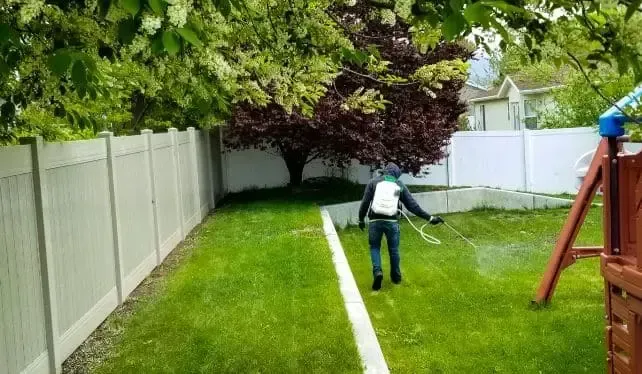How Long Can You Store Fertilizer: A Guide for Utah Homeowners
For homeowners in Utah, understanding how to store lawn fertilizer effectively is as important as knowing how to use it.
This article will provide insights into the shelf life of different types of fertilizers and best storage practices, especially pertinent to Utah’s climate.
Understanding Fertilizer Shelf Life
Types of Fertilizers
Granular Fertilizers: These typically have a longer shelf life. When stored properly, they can last for several years without losing their effectiveness.
Liquid Fertilizers: They have a shorter shelf life compared to granular types, usually around 1-2 years.
Don’t want to worry about storing fertilizer? Green Grounds makes fertilization and weed control easy. Call us today!
Factors Affecting Shelf Life
Moisture and Temperature: High humidity and temperature fluctuations can degrade the fertilizer faster. This is particularly relevant in Utah, where summers can be quite hot.
Storage Conditions: Proper storage is key to extending the shelf life of fertilizer.
Best Practices for Storing Fertilizer in Utah
Keep It Dry: Store fertilizer in a cool, dry place. Moisture can cause granular fertilizer to clump or liquid fertilizer to separate and degrade.
Airtight Containers: Use airtight containers to protect the fertilizer from humidity and temperature changes.
Away from Direct Sunlight: Store in a place where direct sunlight cannot reach, as UV rays can also affect the fertilizer’s potency.
Safety Measures: Keep it in a secure location away from children and pets.
Signs of Deterioration
Granular Fertilizer: Clumping or a change in texture can indicate moisture exposure.
Liquid Fertilizer: Separation or a foul odor can be a sign of degradation.
When you hire Green Grounds for fertilization, not only can you leave worry behind when it comes to deterioration of fertilizer, but you enjoy a lush, weed free lawn all throughout the spring, summer, and fall.
How to Dispose of Old Fertilizer
Check Local Regulations: In Utah, there are specific regulations for disposing of garden chemicals.
Don’t Pour Down the Drain: To protect the environment, never pour old fertilizer down the drain or toilet.
In summary, the shelf life of fertilizer can vary greatly, with granular types generally lasting longer than liquid ones.
For Utah homeowners, proper storage is essential to maximize this shelf life.
By keeping fertilizer dry, in airtight containers, and away from extreme temperatures and direct sunlight, you can ensure its efficacy for multiple seasons.
Always be mindful of the signs of deterioration and follow local guidelines for disposal when necessary.










